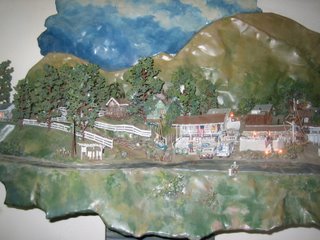This morning I received an email from Bob Buford with this short article attached. Bob noted that it is within the calling of Leadership Network to help find, connect and multiply the next generation of leaders--which it is. Of the 350K churches in America only a handful of them will influence the rest. These will be churches of impact, innovation and influence.
Sightings 4/17/06Remembering William Sloane Coffin-- Martin E. Marty
Where are the Bill Coffins of today? That question comes up in most reflective comments on the death of William Sloane Coffin, Jr., the most celebrated and charismatic liberal Protestant preacher of the last half-century. Not long ago we responded to major secular figures who were asking, "Where are the Reinhold Niebuhrs of today?" as they recalled the gifts and influence of the most noted twentieth-century Protestant theologian. Catholics and Jews ask, "Where are the John Courtney Murrays and Abraham Joshua Heschels?" -- top thinkers and doers of a few decades ago. Where are the Martin Luther Kings of today? One of these years there will be obituaries for Billy Graham, and though the TV screens offer arrays of evangelists, we will be asking, "Where are the Billy Grahams of today?"Note that the question is always in the plural: Coffins, Niebuhrs (though there were two of them!), Murrays, Heschels, Kings, Grahams -- as if each had not been unique, as if there were multiples made from their mold. There weren't. And note that none of them had been anticipated. When Coffin emerged in the 1960's, no liberal Protestant preacher had been nationally acclaimed since Harry Emerson Fosdick, titan in the twenties. The Niebuhrs came on the scene decades after any Protestant theologian had been a celebrity. Name one between Walter Rauschenbush, pre-World War I, and the Niebuhrs. Who, Catholic or not, paid any attention to any Catholic theologian in the half-century before Murray? And Heschel? Maybe Jews knew of antecedents, but the wider public did not. Not at all. I'm old enough to remember the emergence of all these, including Graham. We all thought that Billy Sunday in the 1920's had ended, had killed off, the possibilities for urban evangelism. Then came Billy Graham.These questions about "Where are the ...?" are legitimate and can be thoughtful and probing. Some show awareness of context and changed agendas, and are not all moved by nostalgia for mythic figures who themselves once had enough trouble forming constituencies, clienteles, audiences, and congregations when they came on the scene. Maybe some mix of genes and circumstances assured that there were "giants in the earth in those days." But the world, the nation, and its religious agencies have moved on, and one cannot recreate the circumstances that made them credible and offered them a hearing.
The better question, since issues as large as theirs are with us now, is: How do we, as a nation and in religious sectors, summon energies, inspiration, resources, will, and potential constituencies so new sets and types of leaders with new tactics and messages can emerge? Even as we ask, we are allowed this week, at least, first to join the rememberers and the nostalgic in noting the loss so many of us feel as friend Coffin departs the scene. The Martys got to say goodbye personally to Bill in Vermont a year ago October, but he kept saying hello anew in books, writings, sermons, mumbles, witticisms, proclamations of the gospel, moral nudges, and even breaths and gasps. My hunch is that he will still do his gospelling posthumously.
But we are allowed to miss him, to really miss him, and, if we share the faith, to thank God for his presence and hope for whatever kinds of truth-telling leadership may emerge.
Martin E. Marty's biography, current projects, upcoming events, publications, and contact information can be found at
www.illuminos.com.
----------
Sightings comes from the
Martin Marty Center at the University of Chicago Divinity School.




























